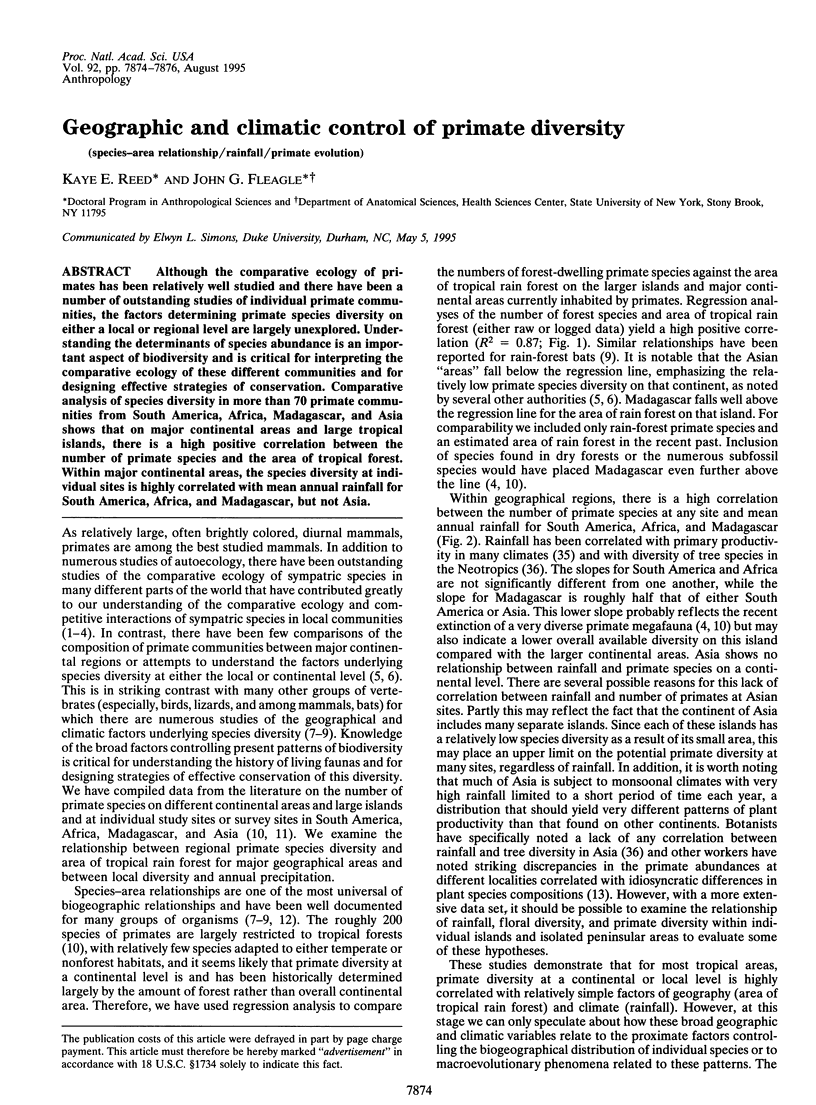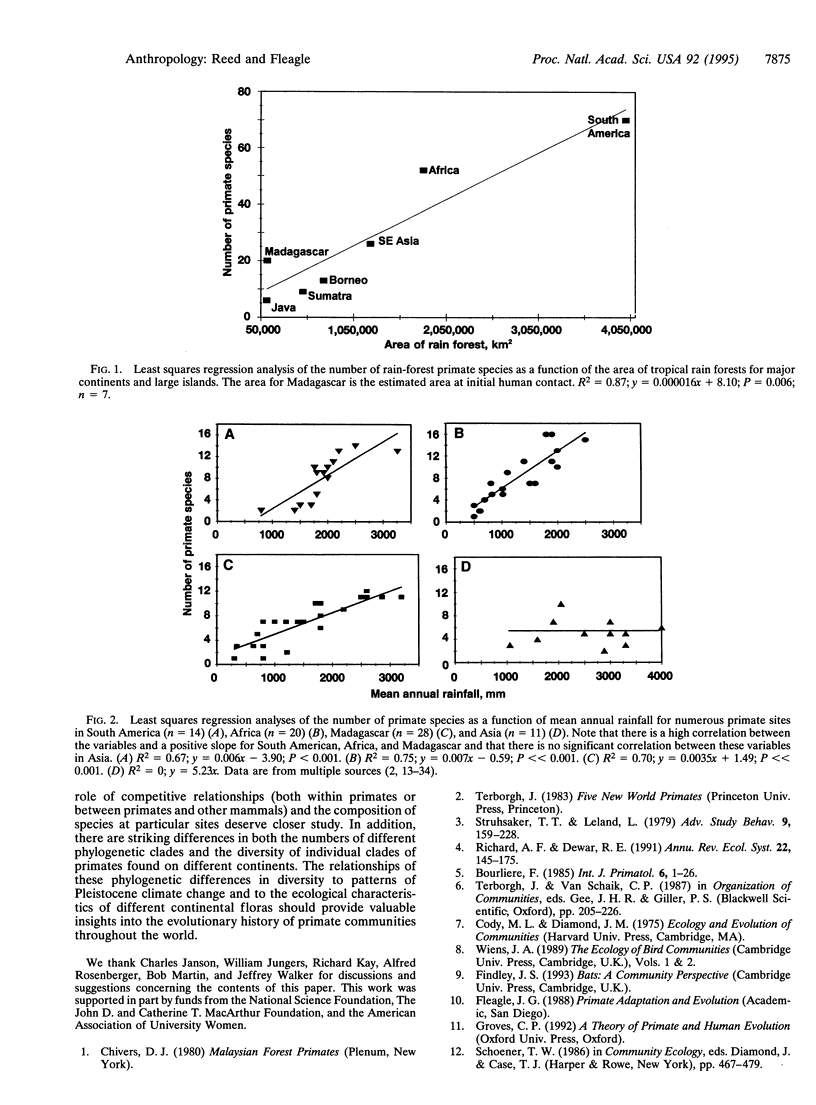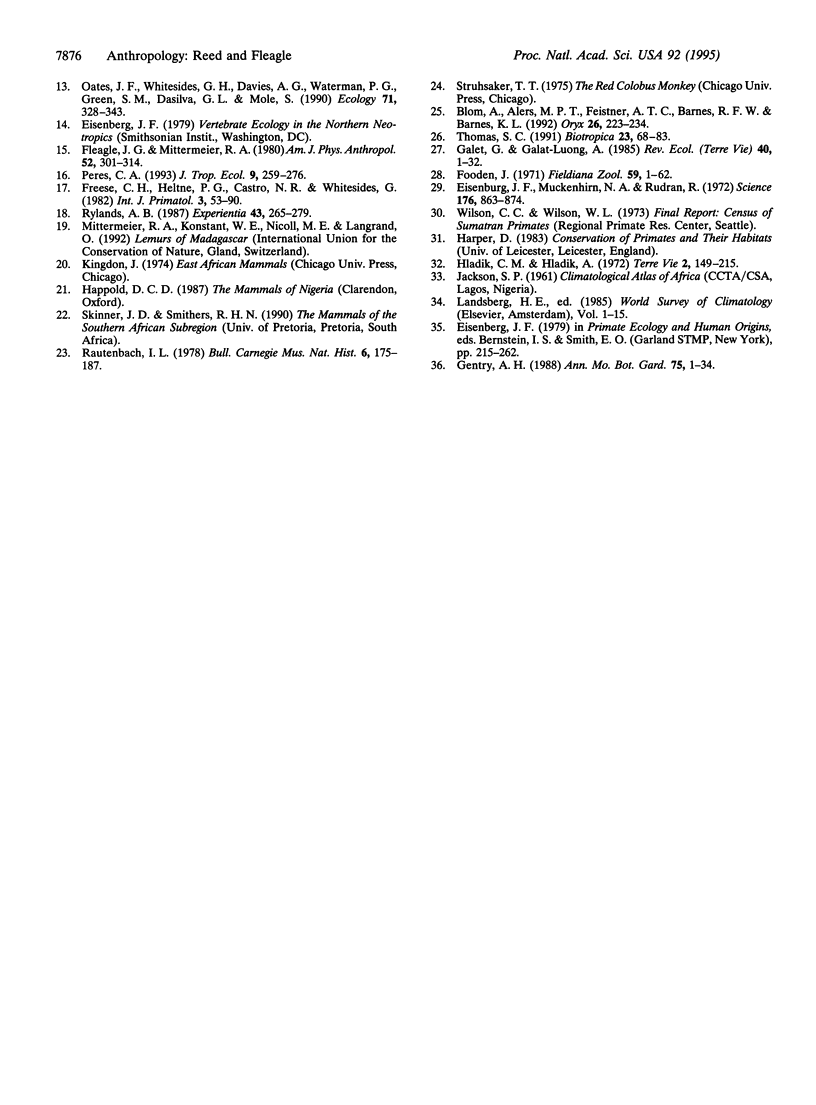Abstract
Although the comparative ecology of primates has been relatively well studied and there have been a number of outstanding studies of individual primate communities, the factors determining primate species diversity on either a local or regional level are largely unexplored. Understanding the determinants of species abundance is an important aspect of biodiversity and is critical for interpreting the comparative ecology of these different communities and for designing effective strategies of conservation. Comparative analysis of species diversity in more than 70 primate communities from South America, Africa, Madagascar, and Asia shows that on major continental areas and large tropical islands, there is a high positive correlation between the number of primate species and the area of tropical forest. Within major continental areas, the species diversity at individual sites is highly correlated with mean annual rainfall for South America, Africa, and Madagascar, but not Asia.
Full text
PDF


Selected References
These references are in PubMed. This may not be the complete list of references from this article.
- Eisenberg J. F., Muckenhirn N. A., Rundran R. The Relation between Ecology a Social Structure in Primates. Science. 1972 May 26;176(4037):863–874. doi: 10.1126/science.176.4037.863. [DOI] [PubMed] [Google Scholar]


